We are regularly informed by politicians and their media allies that the United States is the best and richest country in the world and that Americans have never been richer. And nobody is richer in the U.S. than the federal government, which can and does literally print money (soon to mint a $1 trillion coin because the best way to address a financial problem is never to work harder or spend less?). Here are photos from Death Valley National Park, owned by the federal government, from December 2022:
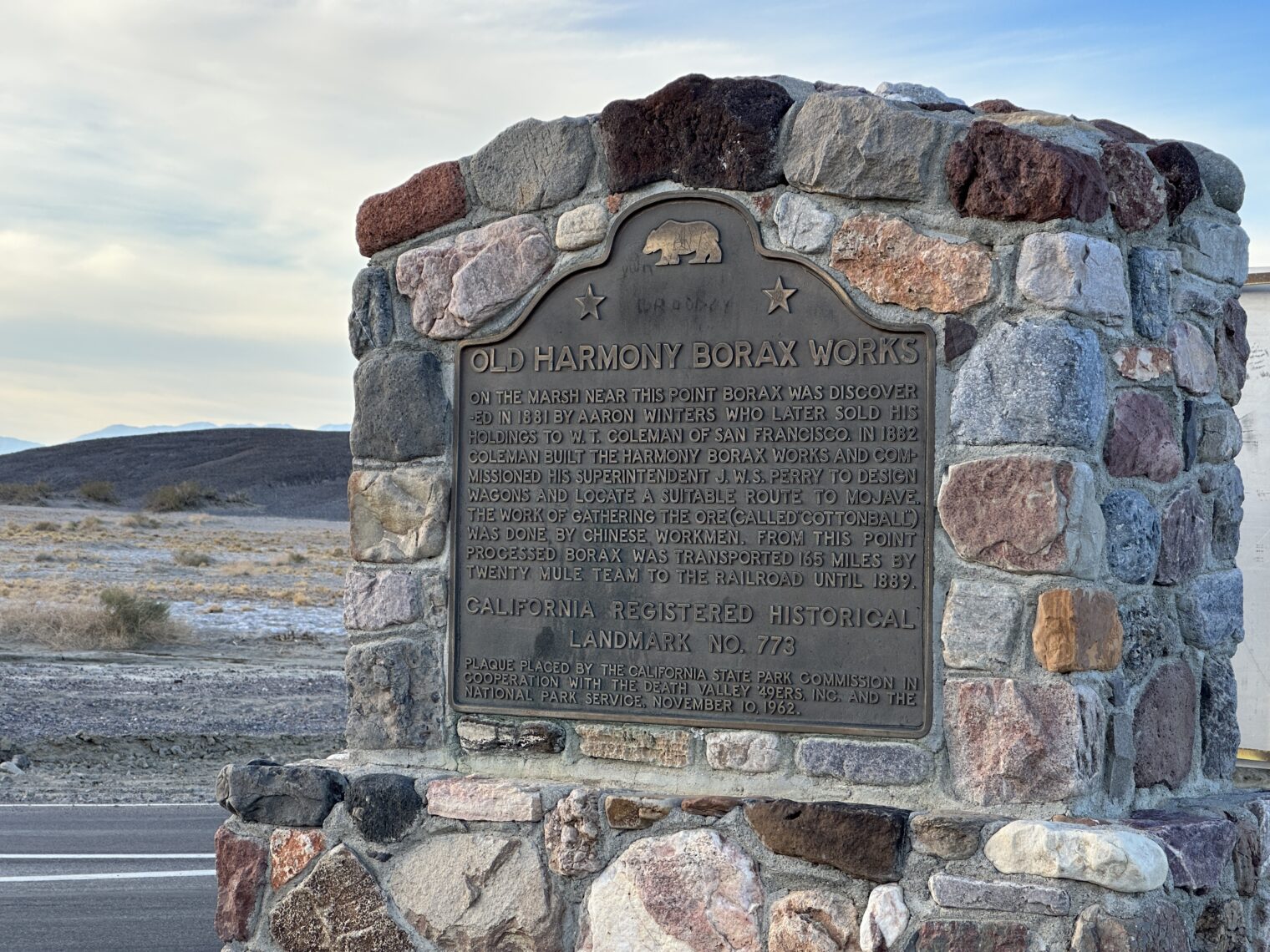
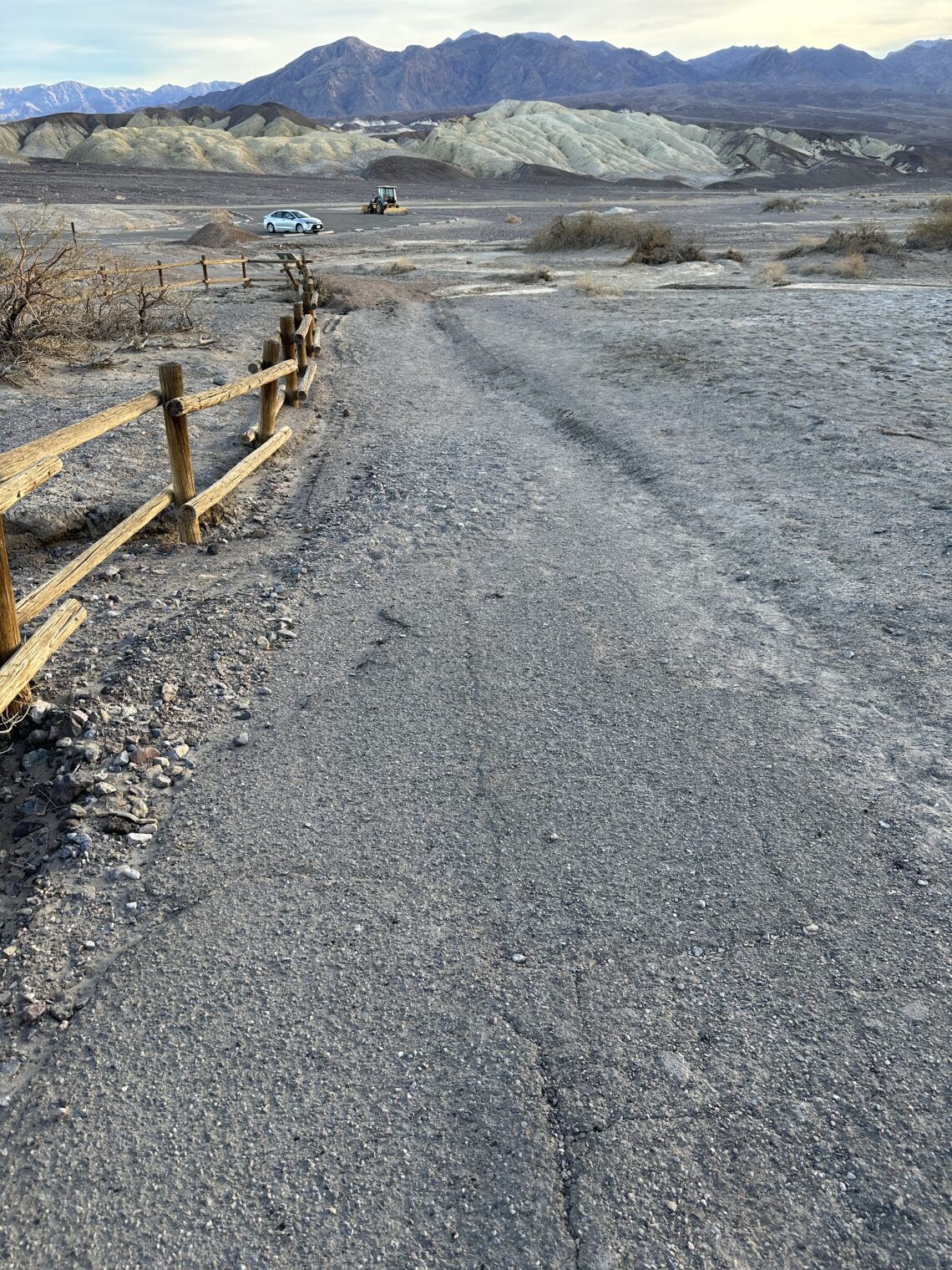
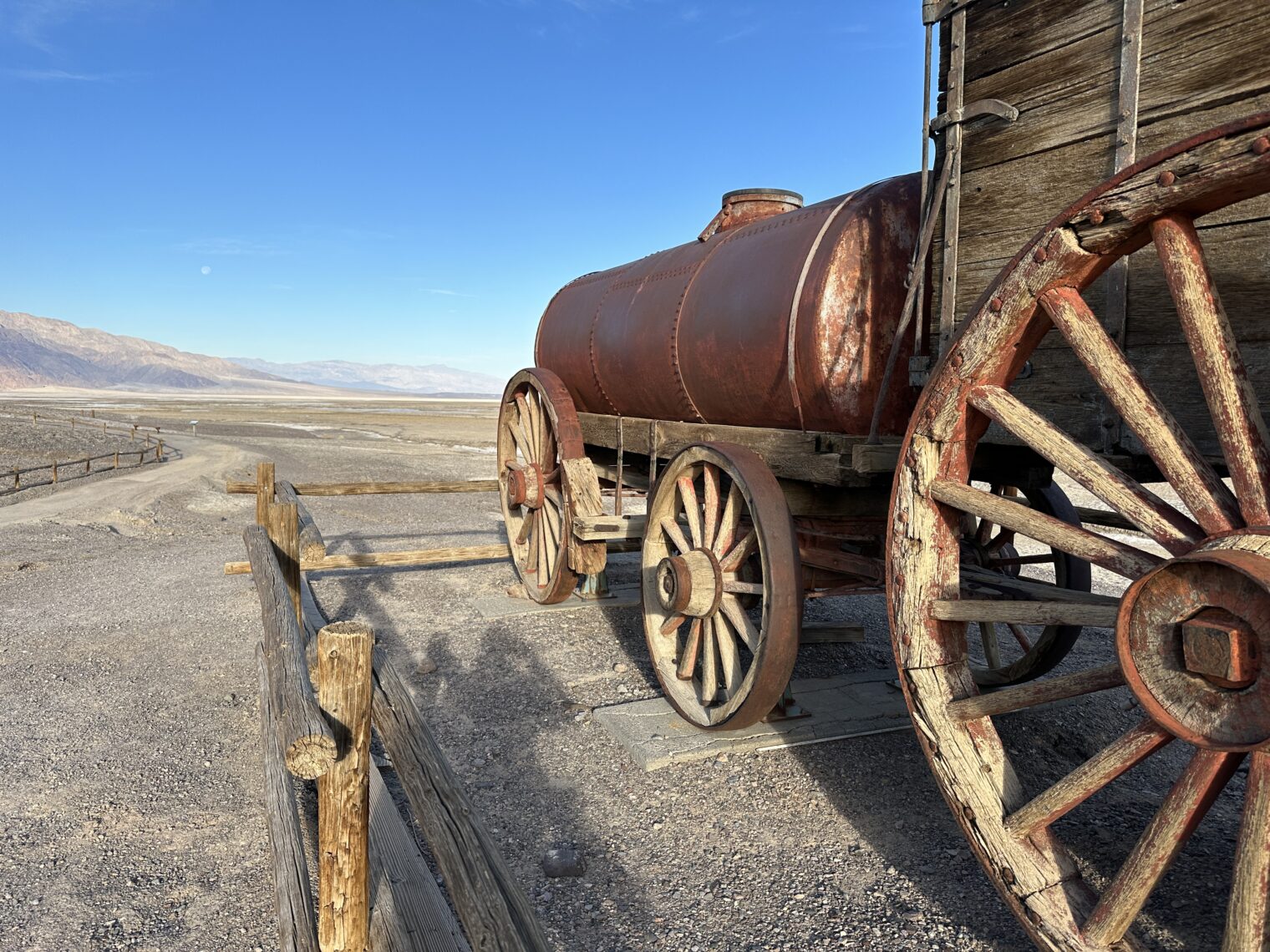
What was built as a wheelchair-accessible path will no longer work for our disabled brothers, sisters, and binary-resisters because the pavement is so deteriorated. How about at the local airport? A core mission of the federal government is making sure that U.S. airports are functional and this one is actually owned by the Feds.
The runway at Furnace Creek Airport, L06, is described as being “In Failed Condition”. The aspiration for the airport, lowest in North America at 210 feet below sea level, is greatly reduced from 1954, when it had a jet-capable 5,500′ runway. Airnav says “UP TO 4 INCH SALT HEAVE ARND RWY CRACKS. COULD DMG ACFT WITH WHEEL FAIRINGS OR CAUSE A POTENTIAL TO BLOW OUT A TIRE.” The National Park Service, whose job it might be to keep this airport in decent condition, says “poor condition; numerous cracks, bumps, ruts, and areas of crumbling asphalt over the entire length of the runway. Consider treating like a gravel/unpaved surface, and use caution at takeoff and landing.”
Pilots in California and Nevada used to meet at this airport to socialize and play a round of golf. Now it is useless except to helicopters and maybe a few taildraggers with tundra tires.
How can we square the myth (we’re richer, smarter, and better than ever) with these facts on the ground of infrastructure that we were once rich enough to create but are no longer rich enough to maintain?
The news is not all bad if you’re a member of the laptop class in Death Valley. Not only did the working class have to pay $7,500 toward your electric car (plus any wealth transfers ordered by a state), but the working class also has to buy you free electricity in Death Valley at public chargers (we plugged in our rented BMW hybrid). The working class member’s gas-powered dinosaur must be filled at $5/gallon within the park:
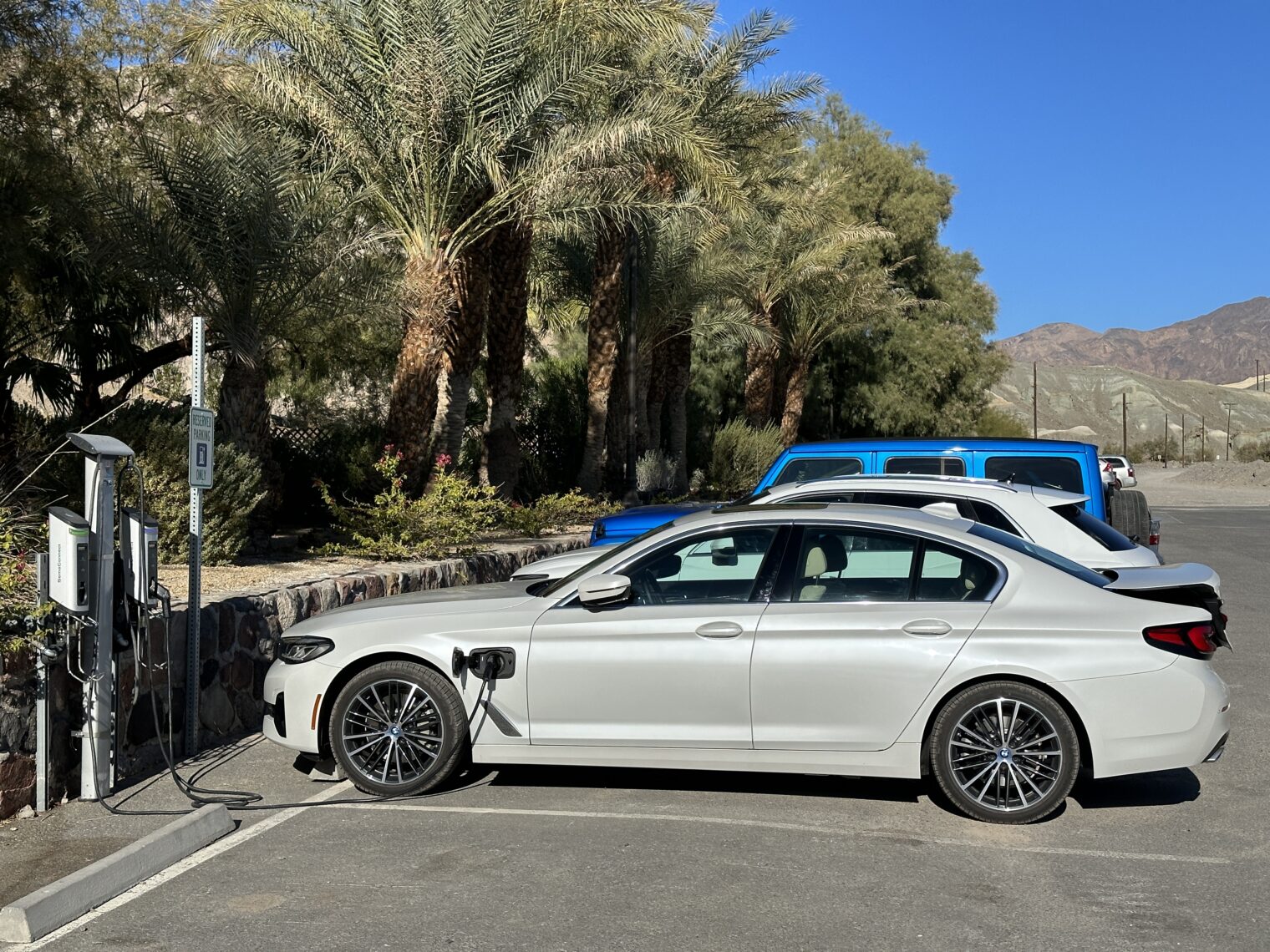
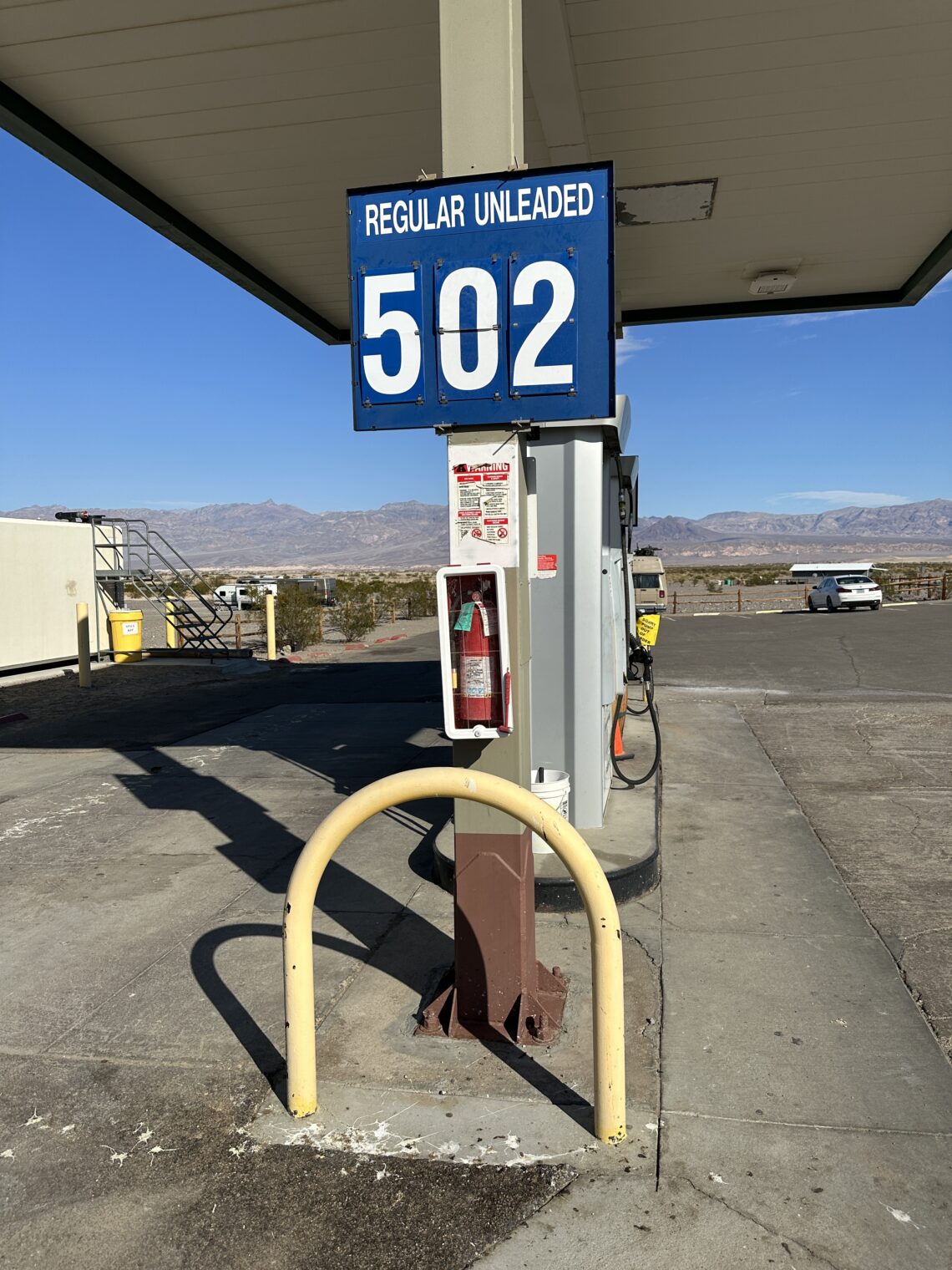
FAKE NEWS ALERT!!!! “Now it is useless except to helicopters and maybe a few taildraggers with tundra tires.” False! I just flew in there in a Cessna 182 with wheel fairings. The runway condition is very poor but any single engine prop plane should will do just fine. The runway is not suitable for jets and airplanes with high landing speeds. Our host would be fine to land here via parachute or on wheels his choice!
FedGov is a massive theft operation. StateGovs are smaller but still massive gangs, too. News at 10.
Considering the decline of general aviation, it’s not surprising that a general aviation airport is gone. The bike path near the lion kingdom used to be paved. Now it’s increasingly gravel. The flood control canals have increasingly eroded & never been repaired. $5 trillion in infrastructure packages doesn’t buy anything anymore.
They spend it all on light rail and buses, Both create perpetual union jobs. Roads are malarkey.
@Lion, you should come over to Cambridge, MA. Many major streets are now taken by bike lane and those bike lanes are empty 95% of the time. Not only that, parking is a nightmare due to those bike lanes.
See [1] to get an idea and don’t let those staged pictures fool you into thinking those lanes are so good. Of course, not everyone is happy about bike lanes [2].
[1] https://www.cambridgema.gov/CDD/Transportation/gettingaroundcambridge/bikesincambridge/bicycling/cycletracks
[2] https://www.wcvb.com/article/bike-lane-backlash-lack-of-parking-spaces-causing-more-frustrations-for-cambridge-businesses/40058177
@George: Why does anyone still live in MA? I left MA for FL 33 years ago!
@DP, lucky for me, I don’t live in one of those deplorable city/towns here in Maskachu$etts , but I’m surrounded by them.
To give you and readers of this blog an idea of how smart the City of Cambridge is when they dedicated streets to bike lanes, watch this video [1]. Jump to the 23 minute maker into the video and watch how confusing it is to drive / ride a bike / walk the streets. The streets are now far more dangerous than they used to be as little as 10 years ago.
[1] https://www.youtube.com/watch?v=VCYlHSKG-og
I am currently reading “Rust” by Jonathan Waldman, about corrosion. Discusses the Statue of Liberty, corrosion in the military, and galvanizing. Highly recommended, for anyone interested in infrastructure.
“Climate Change” Roadways
https://www.nps.gov/deva/learn/news/death-valley-experiences-1-000-year-rain-event.htm
“Death Valley is an incredible place of extremes,” said park superintendent Mike Reynolds. “It is the hottest place in the world, and the driest place in North America. This week’s 1,000 year flood is another example of this extreme environment. With climate change models predicting more frequent and more intense storms, this is a place where you can see climate change in action!”
https://earthobservatory.nasa.gov/images/150181/death-valley-flash-flooding
In early August 2022, flash floods soaked Furnace Creek in Death Valley, the driest place in North America. In just three hours on August 5, a thousand-year rainfall event dropped 75 percent of the local average annual rainfall, which is just under 2 inches (5 centimeters). Flood water washed debris over roads, swept away and buried cars, knocked a water facility offline, damaged buildings, and stranded about a thousand visitors and staff in Death Valley National Park.
“In just three hours on August 5, a thousand-year rainfall event dropped 75 percent of the local average annual rainfall, which is just under 2 inches (5 centimeters).”
Wow! In 2010, Tropical Storm Fay dumped 20 inches of rain in 20 hours in my area on the east coast of FL! In 2017, Hurricane Irma dropped 10 inches of rain in 10 hours!
“Why do we have trouble maintaining infrastructure if we’re richer than ever?”
$400K Sidewinder missiles to shoot down balloons. $10MM for each M1 Abrams Tanks sent to Ukraine. $5T for the 20-year war in Afghanistan & Iraq. $800B in PPP free loans. Etc., etc., etc
You have never been richer, but Americans are still as greedy and selfish as ever. You won’t stop complaining about paying too much tax, and how government is a waste of money. Now you complain that, after all, government does not have that much money?
Compared to other OECD countries, the US has the most dilapidated public buildings and most threadbare public service (except the army). Because Americans don’t want to pay more tax, and prefer to have a little bit more to themselves than quite a bit more for the community. Perhaps it is time to stop complaining and accept that crumbling public infrastructure is the result of your policy choices?
“You have never been richer”
If I made $471,0000 last year but am $3,565,282 in debt and continuing to borrow $150,000 a year with no plans to pay off the debt, am I rich?
Explain it to me like I’m 10 so the average American could understand what policy they’re choosing.
Barack Obama, 2009 – “Shovel-Ready Projects!”
Donald Trump, 2017 – “Infrastructure week.”
I suspect it has much to do with the fact that I-95 is one of the 10 most dangerous highways in the US, by the number and frequency of traffic fatalities.
At first this seems absurd. It’s a long road, sure, but it’s usually four or six lanes, nothing crazy in the scheme of things, a tiny fraction of the paved Interstate highway system, and it’s been around for a long time now.
You’d think that maintenance would be prompt and effective. You’d think that by this point, all the logistics of maintenance with traffic still abundant would have been mapped out and well-understood. You’d think, given how crucial I-95 is to the US economy, that there would *never* be longstanding, frustrating and increasingly deadly problems with the infrastructure.
That’s not how it is, though. Despite traversing some of the “richest” states in the USA, I-95 is a terrible, dangerous mess in many places, a lot of the time during the day, night, winter, holidays – whenever. Dozens of people die every day on that highway. Why?
It is constantly undergoing maintenance that never seems to end. The local, state and federal authorities responsible for policing and maintaining the road collect huge sums of money (and overtime!) keeping that national strategic asset of a highway in barely-passable shape. And we’ve got the dead bodies and shattered lives and families to prove it.
There are many others. Lake Shore Drive in Chicago is only a few miles long. I think the maintenance strategy boils down to: “Dig up one half of the road and repave it. Then when you are done, move the trucks and dig up the other half of the road. Repeat.”
Addendum: And there is *never* enough money to keep the roads maintained, even at the spending levels that everyone agreed upon last time. It’s a slush fund. The money comes from taxpayers and travelers, it goes in one side and disappears. Then traffic fatalities spike and a new, even more exorbitant sum of money needs to be spent.
Why? Because in New Jersey at least, they keep packing more people into the same, super-congested areas. Then the politicians stand up and proclaim: “The condition of I-95 between these areas is a public health crisis. We need another $8.5 billion dollars to save 100 lives.” And in New Jersey, it’s obvious that the road maintenance crews and contractors wouldn’t have their overtime any other way.